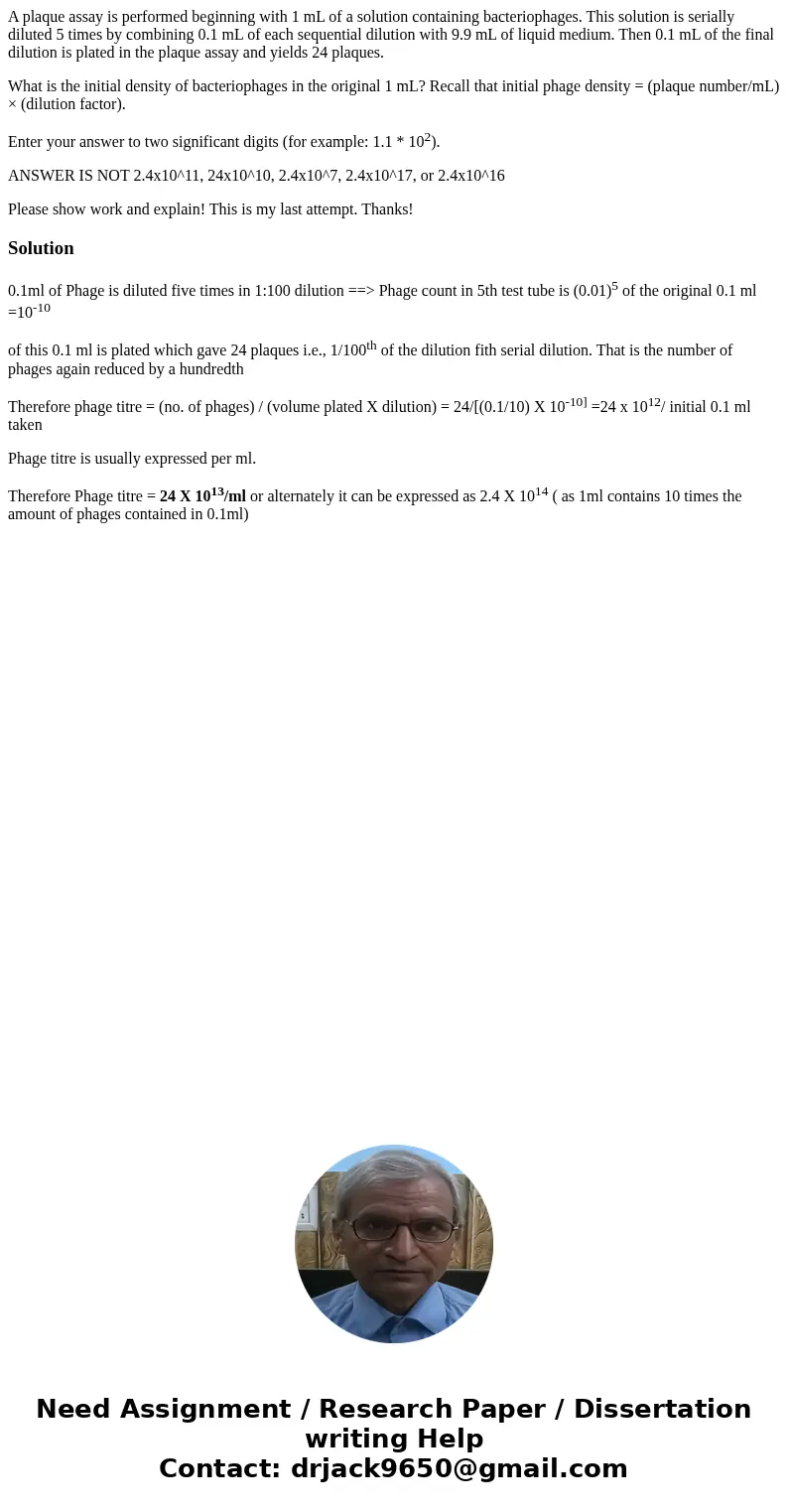A plaque assay is performed beginning with 1 mL of a solutio
A plaque assay is performed beginning with 1 mL of a solution containing bacteriophages. This solution is serially diluted 5 times by combining 0.1 mL of each sequential dilution with 9.9 mL of liquid medium. Then 0.1 mL of the final dilution is plated in the plaque assay and yields 24 plaques.
What is the initial density of bacteriophages in the original 1 mL? Recall that initial phage density = (plaque number/mL) × (dilution factor).
Enter your answer to two significant digits (for example: 1.1 * 102).
ANSWER IS NOT 2.4x10^11, 24x10^10, 2.4x10^7, 2.4x10^17, or 2.4x10^16
Please show work and explain! This is my last attempt. Thanks!
Solution
0.1ml of Phage is diluted five times in 1:100 dilution ==> Phage count in 5th test tube is (0.01)5 of the original 0.1 ml =10-10
of this 0.1 ml is plated which gave 24 plaques i.e., 1/100th of the dilution fith serial dilution. That is the number of phages again reduced by a hundredth
Therefore phage titre = (no. of phages) / (volume plated X dilution) = 24/[(0.1/10) X 10-10] =24 x 1012/ initial 0.1 ml taken
Phage titre is usually expressed per ml.
Therefore Phage titre = 24 X 1013/ml or alternately it can be expressed as 2.4 X 1014 ( as 1ml contains 10 times the amount of phages contained in 0.1ml)

 Homework Sourse
Homework Sourse